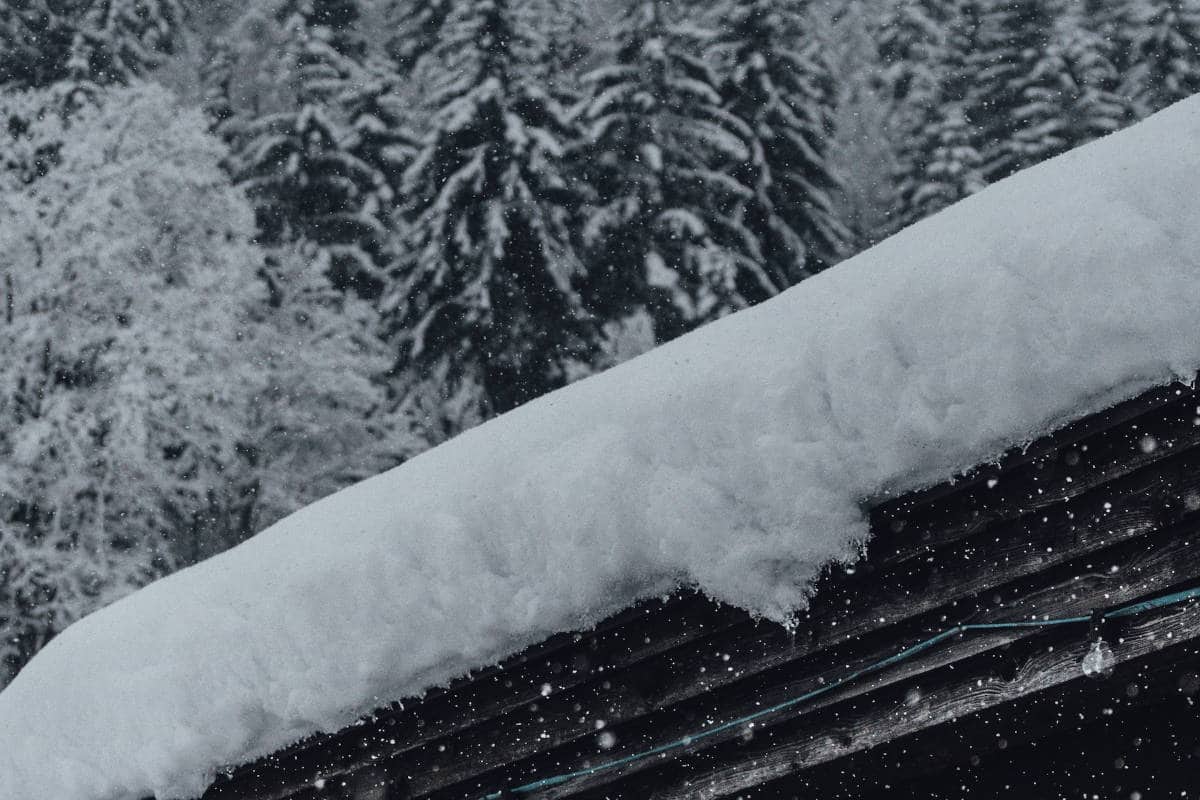
When we think of snow, we tend to think of incredibly small snowflakes slowly falling downward, with even the slightest breeze causing them to float and drift away. So small, so delicate, so light. Once snow has started to accumulate at the ground level, though, it’s a different story.
Anyone who’s had to shovel their driveway or the sidewalk outside their business can attest to how heavy snow can actually be. Even shoveling just a few inches of accumulated snow can be a serious workout. But just how heavy is snow, and is it heavy enough to lead to property damage or create dangerous conditions?
How Can Heavy Snow Be Dangerous?
- Heavy snowfall caused by large snow events can cause a handful of problems for commercial properties.
- Snowfall of any significant amount can put stress onto a roof, and if snow sits on the roof for extended periods of time without draining property it can cause the roof to weaken.
- Heavy snow also tends to take a long time to melt. If a building’s gutters aren’t clear this can cause ice dams to form, which themselves can lead to all sorts of building and property damage.
- Heavy snow and ice can also damage tree limbs and cause them to break. When they fall, they can easily cause extensive property damage or major bodily injury.
- Heavy snow and ice can also take down power lines, leaving the area without electricity for extended periods.
Snow – How Heavy Can It Really Be?
While Colorado is famed for its “champagne” snow – dry snow that is incredibly light and “fluffy” – snow can actually be quite heavy. When trying to envision just how heavy snow can be, we have to think of the square footage of a building’s roof and how much snow accumulation we may get in a snowstorm.
Most commercial buildings have flat roofs, which offer structural advantages over sloped roofs due. With a median building size of 5000 square feet, we can use a snow weight calculator to see just how heavy even small accumulations can really be.
- 1 cubic foot of fresh snow typically weighs about 3-4 pounds. This means a 1 foot accumulation of fresh snow on a 5000 square foot roof weighs anywhere between 15600 to 21850 pounds.
- 1 cubic foot of settled snow (snow that’s started to compact) weighs about 12-18 pounds. A 1 foot accumulation of settled snow on a 5000 square foot roof weighs anywhere between 62,450 to 93,650 pounds – about 4 times heavier than fresh snow.
- 1 cubic foot of wet, slushy snow typically weighs about 25-51 pounds. So, a 1 foot accumulation of wet snow on a 5000 square foot roof can weigh anywhere between 124,850 to 259,100 pounds – around 8-12 times heavier than fresh snow!
That’s a lot of weight to have sitting overhead, but luckily building codes here in Denver more than account for this. Denver building codes state that roofs must be able hold 35 pounds per square foot. This was set after the Great Colorado Snowstorm of 1913, when many roofs – residential and commercial alike – collapsed under wet, heavy snow.
Luckily, very wet and heavy snow is pretty uncommon for the Denver metro area; however, areas such as Clear Creek, Colorado, which is much higher in elevation and sees much more average snowfall, have much stricter standards – 65 pounds per square foot in this case. Having almost double the load capacity required shows that heavy snow can be a serious issue if not handled properly.
How to Prevent Heavy Snowfall from Causing Property Damage
Inspect Roof Before Winter
It’s important to inspect your building’s roof before winter to remedy any problems that may arise from snow and ice accumulation. Water trickles downward; any tiny cracks in the roof of areas that aren’t waterproofed could create problems with leaks, water damage, and even interior flooding.
Inspect Gutters and Drainage Systems Before Winter
In order for your roof to drain all the water runoff from melting snow, your gutters and downspouts need to be in good condition. Clogged gutters are a common cause of waterlogged roofs and ice dams, which can cause some pretty drastic problems with water damage to the building.
Cut Back Dead or Damaged Tree Limbs
Dead or damaged tree limbs are just an accident waiting to happen; remove them as soon as possible to prevent property damage or personal injuries.
Remove Snow and Ice from Awnings and Other Overhead Structures
Awnings, pavilions, and other exterior structures all tend to have sloped roofs, just like residential roofs. Icicles tend to form along the edges of these structures as snow trickles down, and sudden shifts in the snow can cause entire sheets to slide off the roof. This can easily damage outdoor furniture, decorations, or plants, as well as cause serious injuries.
Keep Your Property Protected From Heavy Snow, Ice, and Property Damage with Snow Management Services
For over 25 years, SMS has been the preferred snow removal contractor for hundreds of commercial properties in the Denver area. Our team has the equipment and expertise needed to keep your property safe, even in the roughest of winter weather.
Our process starts with winter property planning. Taking the time to identify the most efficient way to keep your property clear, and highlighting any possible trouble areas, is the best way to ensure quick and effective service.
Quickly clearing snow and de-icing is critical so that parking lots and sidewalks stay clear, reducing the risk of winter accidents or injuries. We can even remove snow off the property altogether if need be. Our team is committed to rapid response times to keep your property safe.
To see how SMS can help keep your Denver-area business or commercial property protected from winter weather, give us a call today at (303) 750-8867 or get in touch with us online to get started.
